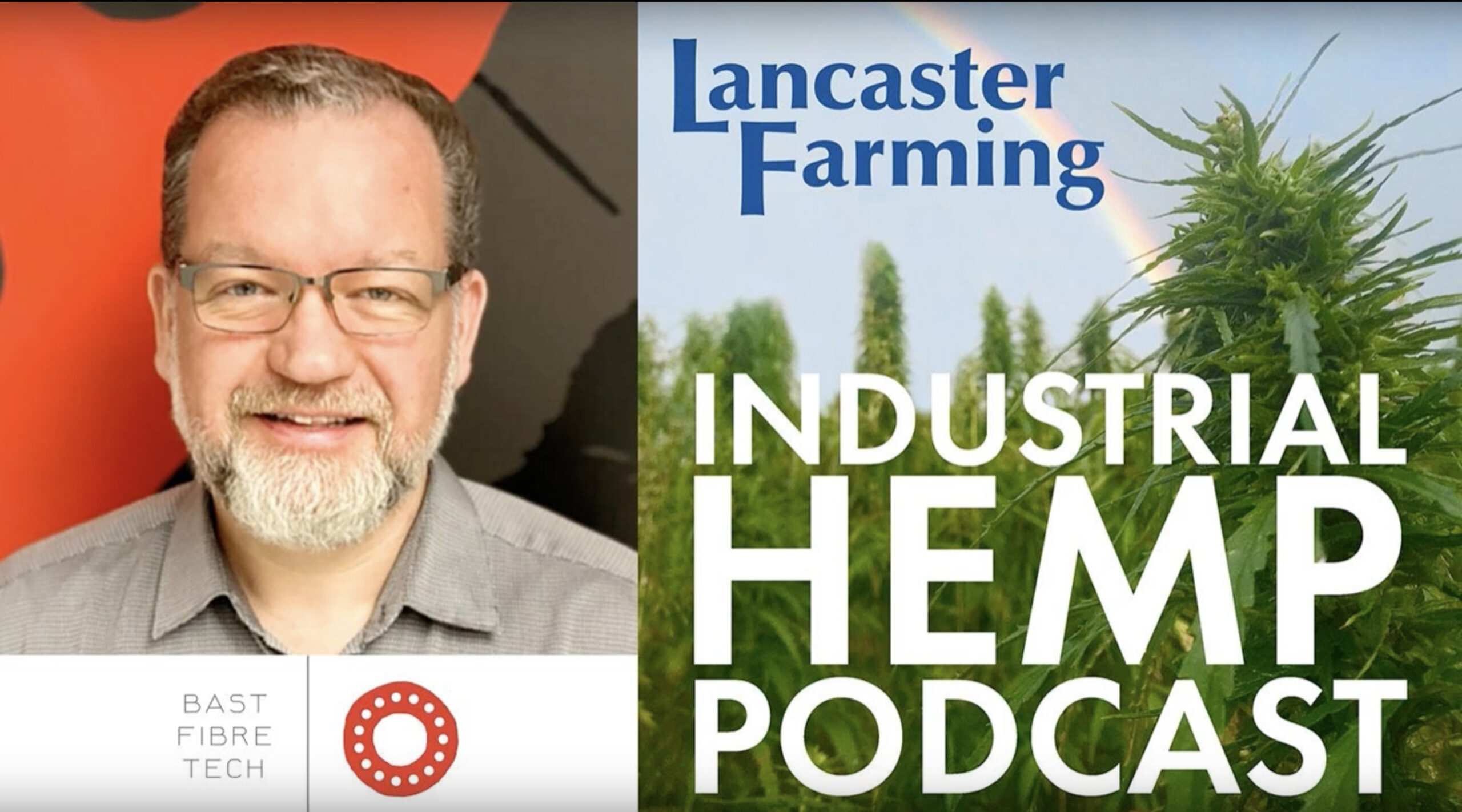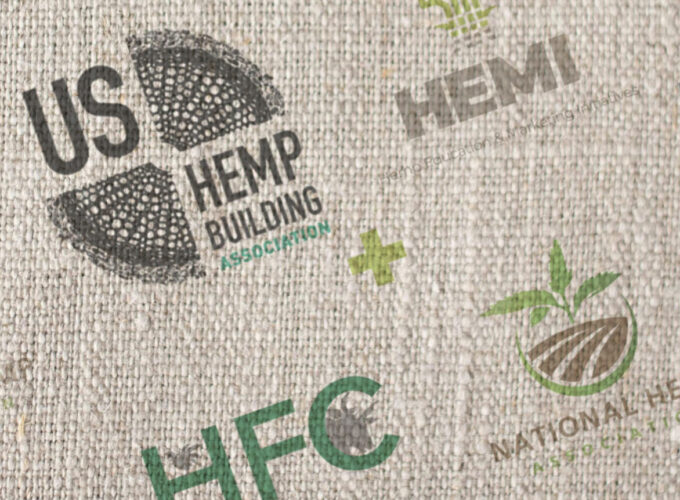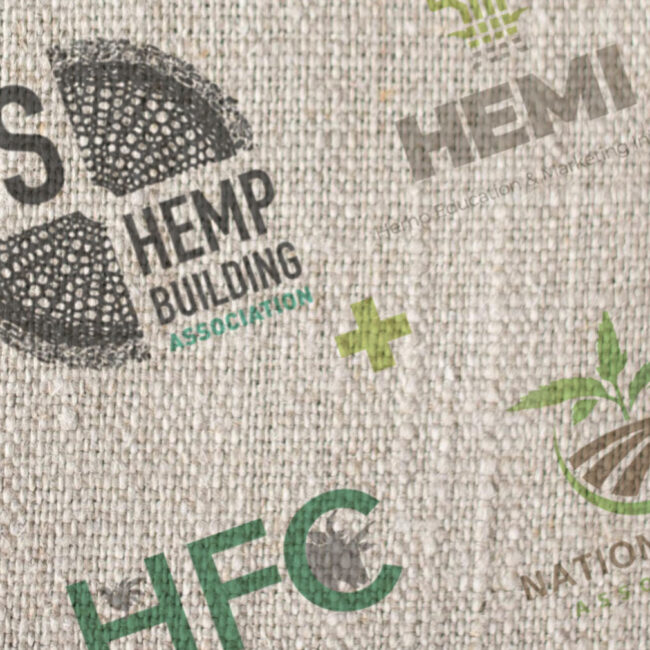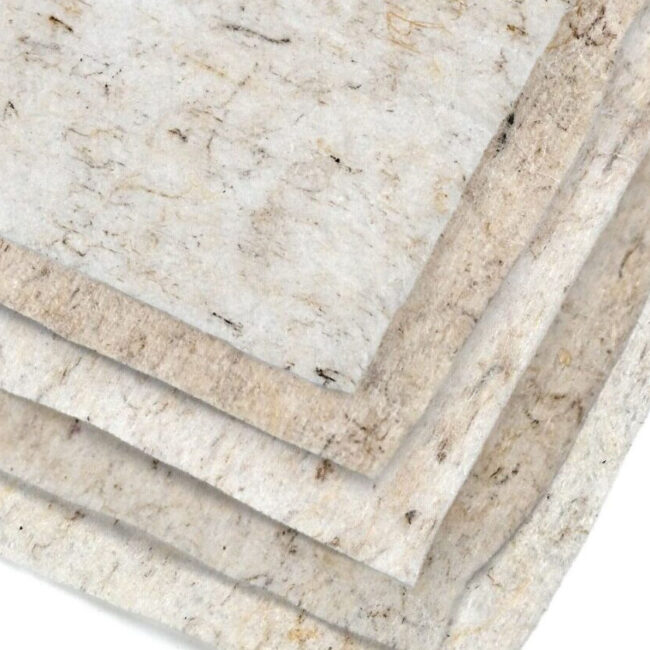Listen to Podcast via YouTube, Click Here.
Transcript below:
“Consumer preferences are what they are and it’s nicer to wear garments that are made of cotton or natural fibers than it is to wear viscous or polyester so it’s just the way it is and the same thing will be seen with single-use wipes. When consumers realize that when you’re using a typical wipe to clean your counter that it’s plastic or you’re using one of those wipes at the grocery store to clean the handle and disinfect that’s plastic it’s unnecessary and there’s better alternatives,”
That’s Jason Finnis from Bast Fiber Technologies. This is the Lancaster Farming Industrial Hemp podcast, and name is Eric Harlock. Welcome back to the Hemp Show.
Today we’re going to dive back into the world of nonwovens. A couple of months ago I talked to Mattie Mead from Hempitecture about the hemp opportunity for nonwovens in the built environment. Today we’re going to learn about the hemp opportunity for nonwoven hygiene products these are personal care products like wipes pads diapers—things that play a huge role in our lives but often go unnoticed. More often than not these ubiquitous nonwoven fiber products are made from petroleum, oil, plastic—and do you really want microplastics in your most intimate areas?
Yeah—I certainly do not. And that’s exactly what has motivated Jason Finnis and the team at Bast Fiber Technologies for over 30 years Jason has been working to bring hemp fiber into hygiene and next to skin products not just as a sustainable alternative but as a technical high-performance material that’s ready for the market now so we’re going to talk about regional supply chains fiber quality customer expectations and the big opportunity for American grown hemp in a global fiber economy.
…….
Today we’re going to get back into nonwoven because there is so much opportunity here for hemp and for other natural fibers. I love this conversation with Jason Finnis because it highlights for me the supply chain. The fiber processing that happens at Bass Fiber Tech is just one step on the way from field to finish product, and—as we will see—it’s a very important step in the supply chain. Bass Fiber Tech is committed to building regional circular supply chains—which is music to my ears.
Jason Finnis, welcome to the Hemp Show. How are you doing?
I’m well Eric, thank you for having me. I appreciate it.
Absolutely – I’m looking forward to learning about what you do in the hemp space.
So first I wonder if you could give us just sort of a short personal introduction?
Sure. My name is Jason Fennis, one of the founders of Bast Fiber Technologies and I’m the Chief Innovation Officer. I’ve spent the last 30 years of my life in the hemp industry—starting grassroots right from the very beginning in an old Volkswagen bus right through to today where we’ve been working to commercialize hemp fibers into hygiene and next-to-skin applications. So I work with our Product Development/R&D teams and business development as well
Could you give me sort of the elevator pitch: what to Bast Fiber Technologies is and how would you describe the part of the hemp industry that you’re in?
I would answer the second part of your question first— we are in the secondary processing side of the industry. Our company is focused on taking decorticated hemp fiber and upgrading it for use in hygiene, next-to-skin applications whether that’s textiles, personal care areas like that as well as into consumer products for cleaning and for installation and things like that. We upgrade our fibers in two locations we’ve got one in the United States in Lumberton, North Carolina and the other one is in Germany just outside of Dusseldorf
Bass Fiber Tech has been described as a “clean tech fiber engineering company”.what does that actually look like in practice?
Well, essentially when you are looking at the markets that we are focused on the technical bar for the fibers is very high. We’re looking to supplement or replace plastic fibers and other man-made or semi man-made fibers in a process that has never really used natural fibers before so it’s very important for us to focus on the fiber quality to ensure that we “engineer” these fibers to the specifications that the converters are used to. And in that engineering, obviously we are not pulping—we’re not changing the cellular structure of these fibers. We’re taking natural plant fibers and upgrading them, but we are able to tailor our processes for end-use applications. So what I mean by that is that we can add performance to the fibers. If we’re looking in being the top sheet in a product like a diaper we can make our fibers behave better by changing their properties a little bit and we can also add finishes and various things to make the fibers more appropriate.
So for listeners who aren’t familiar: let’s talk about nonwovens. You mentioned a few examples in your last answer, but where do we interact with them in daily life?
Oh, almost all the time. A lot of the hemp industry focus on insulation has been “behind the wall”—so behind the drywall, in between the studs. There’s great companies out there that are producing very high quality insulation. Other areas of nonwovens go into automotive parts. Whether that’s a composite or like a fiberglass mat replacement. But the nonwovens that we are focused on are the ones that we interact with most are usually in the single-use category. I’m talking about surface cleaning. If you use a wipe to clean your bathroom or you’re cleaning a table or you’re cleaning your baby or using hygiene products that are single-use and disposable— typically that has been our main area of focus.
Okay. I’ll just add that I have two teenage daughters and there’s a lot of single-use nonwoven things in our bathrooms like little cleaning pads and all kinds of stuff.
Yeah. And the fibers in those are usually plastic or a semi-synthetic. It’s an invisible source of microplastics and landfill contamination or pollution.
And that’s one of the issues that you’re addressing.
Absolutely. That’s why we started the company originally—to address this issue and to come out with a natural fiber replacement that worked very well on the conversion platforms to be able to make those products with efficiency and accessible economics.
I know my family goes out of their way to get organic cotton pads, but there might still be microplastics in there?
Well, it depends. It’s a case-by-case basis. If it’s 100% cotton, odds are there aren’t going to be any microplastics in it. Typically these fibers are blended in with a semisynthetic or a full synthetic.
I’m also thinking of Claire Krunk from Trace Femare and her story is incredible with hemp-based tampons. I’m not sure where she is in her development story but—it’s like you never think about where the microplastics are, but then you find out where they are and how they’re getting…
Or where the opportunities for hemp are. Yes, I know Claire and I know Olaf fairly well and I’m impressed with them both and impressed with what they’ve been able to accomplish and what they are showing and what other companies like them are showing is the market and the opportunity for these fibers in a hygiene product. It’s certainly not the first place people think about when they think about hemp fibers or other alternative fibers, but the market is there and Claire is a is a good example.
And I know she’s had some issues with the FDA getting involved.
I don’t know that that’s an issue. I think that’s just part for the course. In the United States a tampon is considered a medical device and so it requires FDA compliance and certification.
They were asking her for cannabinoid content of the fiber just like with these weird hoops—I don’t know the full story but let’s move on…
That happens to us every once in a while. You have to prove there’s no THC. For those of us who are embedded in the industry it might sound crazy, but for those who are just coming to it for the first time and don’t understand—it’s an easy hoop to jump.
Because people out there who are outside of the hemp space when they hear hemp they think weed?
Yeah, some do. It’s unfortunate but you know through education and conversations like this we are trying to slowly change hearts and minds. As I said, I’ve been doing this since 1993 and back then it was an absolute regular occurrence that hemp was not anything other than a smokable product. Now some people will just default to thinking “oh yeah, that’s in my cosmetics” or “that’s in the bread that I buy” or “I put those little things onto my oatmeal in the morning…the little seeds on my oatmeal.” So it is changing, and it will continue to change.
Let’s change gears a little bit and talk about products and the processes. Walk us through your process from receiving decorticated hemp to producing the final fiber product. What happens at your facilities in in Lumberton and Germany?
Obviously, I can’t go into too deep of a specific. As I mentioned before, we don’t pulp the fibers so we’re not changing the fibers in a chemical like dissolving them and then reconstituting them as you would do with a viscous or a liasel, essentially. When we purchase raw material it comes into our facility and then we thoroughly clean the fibers using a combination of processes to basically remove anything on those fibers that would be considered a contaminant. At the same time we control the the length, we control the brightness—we control as much of the product as we can without changing the nature of the fiber. It’s always been important to us that we are selling an actual plant fiber. A staple fiber as it’s called in the in the industry, which means it’s a fiber that came off the plant and has not been changed other than in cleaning. So we produce a hygienic product or a product that can be introduced into a hygienic manufacturing process. We don’t make any of those products and we don’t make fabric or things like that. We sell a bail of purified hemp fiber that’s about 250 kilos in weight and looks very much like a bail of cotton.
So how do you tailor the fibers for different customer needs like absorbency, strength, or fire resistance?
Well, yeah—fire resistance: that’s an easy one. There’re products you can add—like anybody who’s in the insulation business would be adding a finish of some sort of fire retardant to the fiber. And you can do that in a very eco way or you can do it in a less eco way. So there’s always ways that you can modify the properties of the fiber but I think some of the most important areas to look at are the way the fibers are grown. And just to ensure that your supply chain is high quality. The adage that I always say is “quality starts in the field”. If you’re not monitoring how the crops are grown, how they’re readied, and how they’re processed through the decortication process then you’re not going to be able to turn it into a high-functioning consumer product. So that’s where our focus lies.
So are you then working closely with farmers or working with decorticators? Talk about some of those relationships.
We work throughout the supply chain to be honest with you. In the past I’ve led farmer field days on how to grow these crops—specifically for a next-to-skin application we’ve run decortication facilities so we understand the process. And so whether we’re dealing with the farmer or the decorticator, we are able to source material that fits our requirements. That is the the biggest quality indicator that we have.
Do you refer to the company as BFT internally?
Sure yeah, BFT.
All right. So you said BFT doesn’t make products or wipes you just sell bales of hemp. So who are your customers and how do your fibers get to the store shelves then?
Ultimately our customer are the would be the nonwoven converter. These are the companies that exist globally that buy staple fiber and then they run it through a formation process. Sometimes that is a hydro-entangling where they’re entangling the fibers with high pressure water jets; sometimes it’s done with needles like in a needle punch application; sometimes it’s done just through air where a random assortment falls onto a belt. So those are our customers—but ultimately when we are working to get our fibers out there we also deal a lot with the end brands. So whether those brands are local or global, we work with their product development teams to help design products and then we pull that demand through our supply chain to be able to get the fibers to them that they want.
Okay. Can you talk about any of those companies that have those end products?
Sure yeah well there’s a few uh a few great companies uh in Europe that we are commercialized with. There’s the Mewalii which is a period care product out of Scandinavia that’s commercialized. We deal with Clinique it’s an Eastern European brand—yeah, there’s a number of companies that we’re commercialized with and a number more we’re in development with.
Let’s talk about the properties of hemp—what makes hemp especially well suited to nonwoven compared to other fibers—flax, canaf, things like that.
Sure. Well, those other fibers you mentioned are bast fibers and they all have excellent properties. I think that when you’re looking at hemp fiber—or bast fibers, in particular—you can look at this from a number of perspectives. One would be sustainability. They’re very high biomass yielding crops; they grow relatively simply in a regenerative or organic way. They tick all of the boxes when it comes to what brands are looking for which would be: carbon reduced, water reduced, chemical reduced, they’re easy to grow in the United States, they’re easy to grow basically anywhere there isn’t permafrost. So you have local supply chains that can be built so from a manufacturing perspective and from a sustainability perspective they’re fantastic. When you look at their properties in these products they have great absorption numbers. So for absorbency they’re quite good, they’re very good in insulative—whether it’s acoustic or thermal—so that’s great. Like the boards that are behind you on the wall, but it’s also great for thermal layers in apparel. So using it as an insulation in a winter jacket or something. So they’ve got great properties and they’re also quite soft—which is kind of contrary to what people might think who are not familiar with these types of fibers. They’re very nice next-to-skin.
Do you work with all types of hemp or do you prefer you know like fiber specific varieties?
Depends on the end use. Most of the time we deal with fiber specific variety but depending on where the fibers are destined we can work with various qualities and various reading degrees.
Are there any challenges that come with sourcing fiber from cannabinoid hemp or grain hemp?
Yes. When you’re looking at a next-to-skin application or some of the higher end we tend to stay away from the cannabinoid fibers and seed varieties. Also, the percentage of fiber per stem is a bit lower in some of those varieties—which means you have to process more to get the same amount. So it’s less economic.
That’s a function of fiber plants grow tall and they don’t branch off when the other varieties do…
Yeah, well also fina or some of these other seed crops are very short and so while you might get three tons an acre of a fiber crop you might get 500 kilos per acre on a seed variety.
That reminds me that I got an email from the the creator of Finola a few weeks ago. I should write back to him.
He’s had quite an impact on the industry.
Tell me about that.
It’s the de facto crop. When you’re growing hemp for seed finola has been very successful in Canada. And as you’ll no doubt know, in Canada hemp has been grown since 1998 and it’s always been grown as a seed crop—well primarily as a seed crop—and Finanola has been the base workhorse of that.
I sense a little bit from your voice that you might know something about Canada…
(Laughs) I do, yes—and I’m speaking in kilos and acres! I’ll switch to hectares. Yeah, I am based in Canada—in Victoria on the west coast.
Wow. I would love to get out there someday. I hear it’s very beautiful out there.
It is.
Let’s talk about the supply chain. The great thing about hemp as far as I’m concerned is it has this potential to be circular, right? To have our manufacturing near the processing near the fields um and I think you have that sort of in the core of of BFT right?
You’re right: grow, process and sell in the same geographic region. That has been our cornerstone.
So why is that important and is it feasible in the US today?
It’s important from a supply chain efficiency perspective—it’s important for continuity of
supply for your customers. I think looking back in time—looking at COVID—I think what we saw was convoluted supply chains are problematic when something happens. If you have a product that’s grown here and sent way over there…to do this the entire manufacturing process can run into trouble. So grow, process, and sell in the same area limits some of that risk.
But also at the same time you’re limiting the carbon output of shipping, you have regional impact when it comes to working with your local farming base—you’re giving them in some cases additional farmgate revenue. You’re supporting farmers in your community because when you’re talking about a decortication mill there’s only a certain radius around that mill that you can ship fiber economically. So putting things close by makes a lot of sense. And then when our manufacturing—for example when we’re in in Germany—we are able to pull from the surrounding countries very, very easily and gives us continuity of supply because we’re able to mitigate some weather risk. If there’s a catastrophic event that happens in one growing region then we can move and and source from a different one. And that is our goal in the United States as well. Long before last November we had made the decision that we wanted to have a facility in the US that was growing uh and processing fibers or sorry processing fibers that have been grown in the southeastern United States and that’s still where we are. That’s what we are working towards and the supply chain is starting to mature—that’s exactly our our goal.
It’s really exciting to see it coming along. So what do you need from decorticators to meet your quality standards?
Well from the decortication perspective: maintaining fiber length is important. That’s going to be the same whether they’re selling into a textile company or any other group that needs a staple fiber. In decortication it’s important to keep the fiber as long as you can for as long as you can and by doing that you don’t limit where you can sell the fiber. So if you’re running it through a very, very aggressive system where you are pulverizing the fiber and turning it into very short fiber you’re going to limit the market that you can sell to. So our advice to decorticators is always to keep the fiber long. If they can keep it in the 2, 3, 4 inch area—maybe 3 inches—that’s a great place. We also at the same time require the fiber to be relatively free of herd and so we’re looking down into the single digit percentages—probably less than 3%—of herd contamination. Anybody in the decortication industry knows that there’s an inverse relationship between fiber length and cleanliness: the longer the fiber typically the more trash. But there are ways, and so that’s what we kind of rely on our decorticators to do is to elevate the quality of the raw material.
Okay. So you’ve got established relationships with those processors. Can you talk about who you’re working with and…
No, I don’t think I can. (laughs) We are open to working with everyone. Any strategic relationships we have, or anything that we’re working on, we’ve got to sit on. But ultimately we’re here to support the industry. We want the industry in the United States—especially around our facility in North Carolina—to flourish and so we’re open to working with everyone. And what will determine the groups that we work with will be the quality from the field. So the quality of the farmers and the care and attention that’s taken to grow a high quality fiber crop, the care that’s taken in decortication to make sure that we’re getting a fiber that has as tight a length of uniformity as possible—around a target length say 60 mm plus or minus 10—things like that make sure that the fiber is quality. So whoever is able to do that, we are more than willing to work with.
Is there enough fiber decortication capacity in North America to meet demand?
It’s coming. I’d say, yes—there is for the current demand. And tomorrow’s demand: I can see the decortication capacity increasing to meet it. Right now our facility in Lumberton is primarily processing cotton—and we process a lot of cotton. Our goal is to expand that facility. We have the equipment on site to expand that facility for bast fiber introduction using United States grown fibers. So by the time that’s installed later this year moving into next year’s crop here then we will be ensuring that we have relationships with the right decorticators and the right farmers to keep that demand fulfilled.
That’s so great to hear.
It’s been a long time coming.
You must be psyched, just so proud of all of it.
I am. I am very proud. It’s, you know, from my starting out and withdrawing from university to start a hemp business and having everybody look at me like I was insane—it’s been a tough road. But it’s great to see so many people working so hard to further this thing because it’s the
right thing to do. It’s pretty impressive.
So how are big consumer brands responding to you know the natural fibers?
They are pushing for them. In the nonwoven, the textile, and the packaging industries there is a major movement to eliminate plastic. And plastic has its place and we’re not going to bash plastic because in certain applications and certain areas plastic is required—but there are many areas where it’s not. In these single-use products and in packaging and things like that there’s a lot of waste. I think what we’re seeing right now is a convergence of three factors. One: you’ve got consumer preference to get rid of single-use plastics, like whether it’s plastic bags or straws whatever it might be. Then you have the brands that are pushing for their supply chain to go plastic-free. And then: off to the side you have legislation. Like in Europe they’ve got the single-use plastic directive which is very aggressively pushing brands and manufacturers away from single-use plastic. So they’re looking for natural fiber alternatives and it’s a major opportunity for all of us to replace that with a compostable plastic-free, tree-free fiber.
I love that. I’m also concerned the oil industry is very wealthy with a lot of lobbying power here in the US—and they probably want to keep single-use plastics. Don’t they?
Yeah, but I think that there’s going to be plenty of places for the oil industry to continue to make lots and lots of money and to be able to use plastics wherever they need to. But consumer preferences are what they are and it’s nicer to wear garments that are made of cotton or natural fibers than it is to wear visous or polyester. It’s just the way it is and the same thing will be seen with single-use wipes when consumers realize that when you’re using a typical wipe to clean your counter: it’s plastic. Or you’re using one of those wipes at the grocery store to clean the handle and disinfect: that’s plastic. It’s unnecessary and there’s better alternatives.
I’m not on the side of the oil companies—that’s not why I brought that up—but they’ll be happy to hear that there will be some market share left for them. (laughs)
Do you think hemp products will be labeled as “hemp fiber” or something a little more generic? Do you think people are going to want to know that it’s hemp in the thing—or will they care?
Well, you know that probably depends on a couple of factors. One: what the product is—like in textiles—the labeling laws say that if any fiber is more than 3% of the garment it has to be called out specifically on the tag. So it will be called hemp. Or, it’ll be called probably hemp—but in a nonwoven you know you can go to the grocery store and buy a package of disinfecting wipes and it won’t tell you what the fabric is made of so it’s not required in that industry. But certain brands are going to want to call it out—it is a marketing benefit for them to be able to talk about this and transparency.
Consumers want transparency.
They may push the carbon reduction, they might push the composability or the plastic-free status of these things more than saying “Hey, it’s hemp!” Because we are activists. We’re up there on our soap boxes trying to get everybody to use it but the brands aren’t. So whether they say it’s hemp or not—as long as they’re buying it and incorporating it into their products then that’s a win.
Can you talk about the difference between sort of commercialization opportunities between the US and the EU?
Well, Europe was our first stake in the ground. We purchased our facility in Europe a year and a half or so before our one in the US and I think Europeans—both markets are fantastic—but I think Europeans might be a little more aware of some of the environmental (impact). They make maybe a little bit difference when it comes to single-use products. So we have a great market in Europe and we have a much larger, great market in the United States. The consumers in the US that are concerned about this are a very vocal segment of the population and they represent a significant buying power so the brands that are here—whether you’re talking about a global conglomerate like Proctor & Gamble or a smaller company like Honest Company—they’re looking for these types of products, and the consumers are supporting them.
So Germany, North Carolina…what’s next? Are you looking at any other places in the world to put production?
Not really. We’re looking at expanding our footprint in the U.S. by doing this facility expansion in Lumberton with equipment that we have on site and supporting the growth of the industry down there so we can start really pushing Made in America hemp products. There’s a big opportunity there.
How big is the market opportunity?
It’s going to have a lot of zeros behind it. If you just look at nonwovens you’re talking about millions of tons of fiber going into these markets and we’re (only) going to have like 20,000 to 30,000 tons of capacity so we’re a drop in the ocean in this which is why the plastic industry is not going to be too concerned about us.
But it will make a massive difference regionally and to a lot of smaller brands and to a lot of people who are looking for these types of products. It’s a significant volume for us as we grow.
You have to talk about sort of like the health implications of humans not putting microplastics in their body as much. What you guys are doing is just so important on so many levels so thank you for doing all of this. So you mentioned you’ve been in the space 30 some years and now things are kind of coming together. Tell me more.
Yeah—30 years ago I was a student at UIC and I saw an article in a magazine about hemp paper and I thought “well, that makes a lot of sense. That’s what we should be doing,” and so I had a 1966 Volkswagen bus and I filled it up with all sorts of industrial hemp products. I went to folk festivals, flea markets, any market (where) I could get the attention of people. To see what people think. That led me down this path.
What I find now is that when I phone a company or email a company and say this is who I am—I tend to get the email responded to, whereas 20 years ago it was just like off into…
“Crickets…”
Exactly—my calls wouldn’t be answered. So there’s a lot of us who have been in the industry for a long time and have seen the same growth. We’re seeing things actually picking up and moving forward. So it’s a good time and I see a lot of opportunity as we look forward because I think the momentum that the industry has—and, as I said—legislation, consumers, and brands are all picking up on the same mega trend or the global trend towards using our resources more wisely. it just makes a a big impression and I think there’s a big opportunity for us and for all the other fiber guys whether they’re cotton or jute or whatever it is there’s there’s a big opportunity
You talked about Lumberton and your processing plant there. I’m headed down to North Carolina in a few weeks because of the Global Hemp Fiber Summit at North Carolina State sponsored by NIHC. I know there’s some field trips—are we going to take a tour of your facility?
Well, I am speaking on a panel—but I don’t think we’re on the docket for a tour this time.
I know Biophil Natural Fibers is and it’s neat that you’re both in Lumberton—I’m starting to get the sense that it’s all coming together there.
I know—it’s going to be the epicenter of the North Carolina hemp industry, I think. Biophil is doing a great job. And I know that the support coming from NC State and David Sukov and the entire team down there at the Institute of Textiles is just fantastic. It’s that type of focus from that team that’s going to help this along because every aspect of the supply chain is a full-time job. And so our full-time job is looking at upgrading these fibers and getting them into the market— and to have people like Biophil and all the other companies so focused on decortication and to have NC State being able to help with the agronomics and get farmers understanding the best practices—that’s when things start to click. When people are focused on every aspect.
30 years ago could you ever have imagined it coming together like this?
Well yeah, 100% did (laughs)! I started the company way back then because I wanted to get it as big as I possible. I saw this as like absolutely insane that we weren’t using hemp fibers or hemp products. I just thought as soon as people understand that…they’re going to glom onto it and they’re going to be fully into it. It’s taken a little longer…I figured I’d be retired in 5 years and I’m still hoping that it’ll just be another 5 years (laughs) before I can. But no: I always thought this was going to be a big, big thing.
Cool. The world needs visionaries like you, Jason. Thank you so much for your time.
My pleasure. Thank you.







